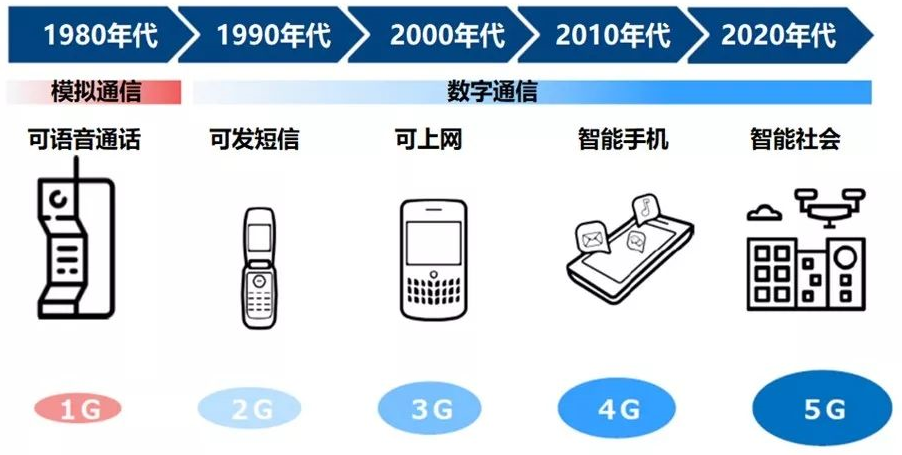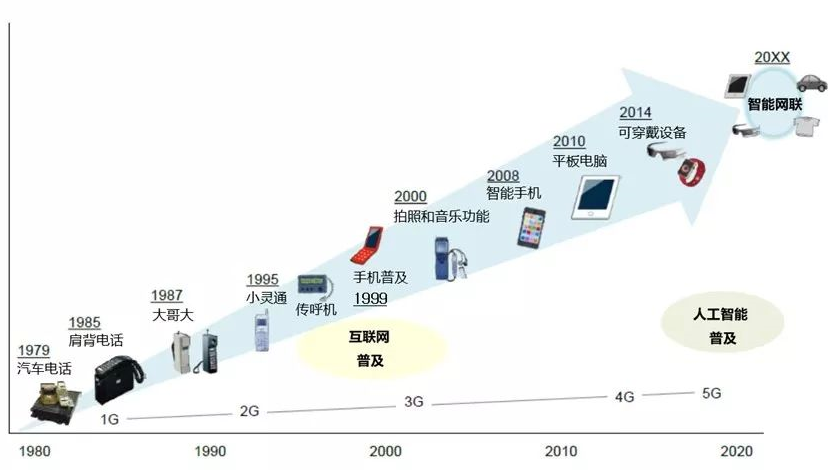5G Edge and Cloud Native Architectures
993 浏览 5 years, 2 months
1.1.0 移动通信发展
版权声明: 转载请注明出处 http://www.codingsoho.com/移动通信的发展演变
Cellular communication has dramatically changed our society and the way we communicate. It is now difficulty to imagine life without modern wireless systems. Wireless empowers our modern life, enables modern societies to operate efficiently, and has had a major impact on modern politics, economy, education, health, entertainment, logistics, travel and industries.
A new wireless generation has appeared roughly every ten years since the first analog generation AMPS system developed in the U.S. by Bell Labs in the 1970s.
蜂窝通信极大地改变了我们的社会和通信方式,很难想象没有现代无线系统的生活会是什么样的。 无线技术赋能了我们的现代生活,使得现代社会能够高效运作,并且对现代政治,经济,教育,卫生,娱乐,物流,出行和工业产生了重大影响。
自1970年代美国贝尔实验室开发出第一个模拟通信系统以来,大约每十年就会出现新一代无线通信系统。
第一代移动通信技术(1G)是指最初的模拟、仅限语音的蜂窝电话标准,制定于上世纪80年代。 2G完成了模拟技术向数字技术的转变,改善了话音质量,并且提供了短消息功能。 3G的目标是提供包括语音、数据、视频等丰富内容的移动多媒体业务。 4G在3G基础上,数据传输速度更快、容量更高、质量更好。
- 1G – Analog cell phone, voice services
- 2G – Improved voice and text messaging
- 3G – Higher data transfer rates enable mobile web browsing, image sharing and GPS location-tracking.
- 4G – High capacity mobile multimedia
Evolution of Internet from “H2H Pre-internet era : storage, disk” to “WWW Internet of CONTENT: web search”, “Web 2.0 Internet of services: online shopping”, “SOCIAL Internet of people : wechat”, “M2M Internet of things”


- https://www.verizon.com/about/our-company/5g/what-5g
- https://www.nokia.com/blog/this-blog-is-by-share-your-thoughts-copypaste/
- 第一代移动通信系统
- 第二代移动通信系统
- 第三代移动通信系统
- 第四代移动通信系统